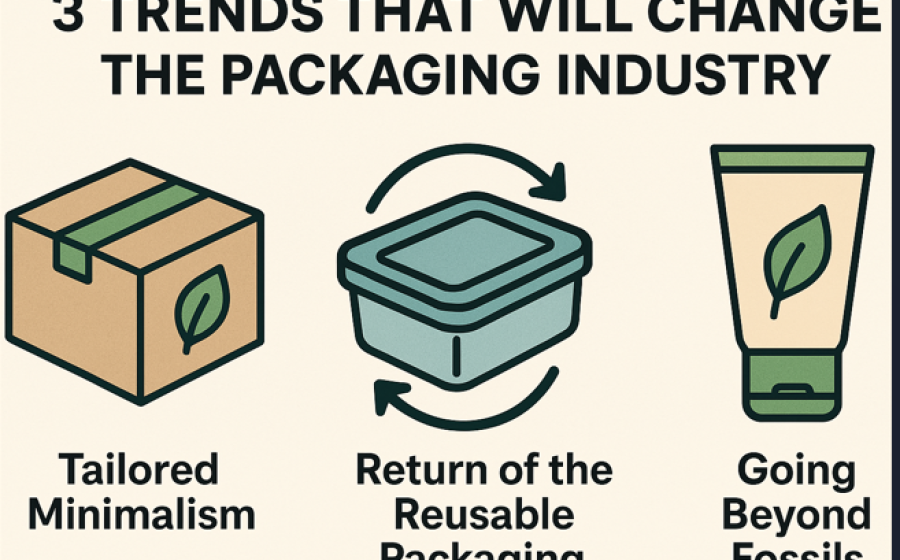
The packaging industry is undergoing a major transformation. Driven by consumer demand, stricter regulations, and sustainability goals, the future of packaging will be defined by materials that are renewable, recyclable, reusable, and designed to protect products without overpacking. Here are three major trends shaping the future of packaging:
1. Tailored Minimalism: Less Is More
The era of excessive packaging is coming to an end. More consumers, environmental groups, and legislators are calling out unnecessary packaging and demanding smarter, more sustainable solutions. In Europe, for instance, some shoppers are even encouraged to return excess packaging to stores or report overpacking — a clear sign that the status quo is being challenged.
While protecting the product remains essential, many current solutions use more raw materials than necessary or combine multiple layers of different materials, making recycling difficult. This is especially visible in sectors like food and cosmetics, where brands often still opt for complex materials when simpler, recyclable, or compostable options like barrier papers are available.
Take the example of frozen baked goods: they typically come in a cardboard box lined with plastic to maintain freshness. Today, that plastic can be replaced with a barrier paper liner that meets European food safety standards and allows direct contact with food — offering the same protection in a more sustainable format.
2. The Return of Reusable Packaging
Recyclability is no longer just a trend — it’s the baseline for packaging design. But the future goes one step further: reusability. Under new EU regulations, all packaging must be recyclable and, in many cases, reusable by 2030, especially in consumer-facing industries. The B2B sector is already ahead of the curve, with reusable packaging widely adopted in logistics and manufacturing.
Reusable packaging isn’t a new idea — just think of milk delivered in glass bottles or wooden crates used in old grocery stores. In fact, back in the 1880s, most packaging was designed to be reused. But in recent decades, disposable packaging has taken over. In 2021, the average EU citizen generated more than 180 kilograms of packaging waste — a significant increase compared to ten years earlier.
To make reusability work on a larger scale, standardization is key. In the future, products within the same category could be sold in identical reusable containers. Labels, therefore, will become the standout branding element, easily removed and replaced during the reuse cycle. Companies like UPM Raflatac are already ahead of the curve, offering wash-off labels in various finishes — from clear and white to metallised films — ideal for eye-catching, sustainable packaging.
3. Beyond Fossil-Based Materials
With sustainability targets growing more ambitious and new EU regulations tightening, the shift away from fossil-based packaging materials is accelerating. Designers are actively seeking out alternatives that minimize environmental impact without compromising performance — and thanks to new innovations, they have more options than ever before.
One example is UPM’s bio-attributed plastics. These materials are “drop-in” solutions, meaning they can seamlessly replace traditional plastics in the packaging process — no changes needed to machinery or design. Everything from cosmetic jars to labels can be made using bio-based alternatives, while maintaining the same look, feel, and functionality.
Better yet, the consumer experience doesn’t change. Bio-attributed plastics and barrier papers can be recycled through existing waste streams, making the sustainable switch effortless for both brands and buyers.
Key Points
The packaging industry is on the cusp of a major evolution. Tailored minimalism, reusable solutions, and the move away from fossil-based materials are more than just trends — they’re the future. As innovation and regulation continue to drive change, packaging will not only protect the product but also protect the planet.

